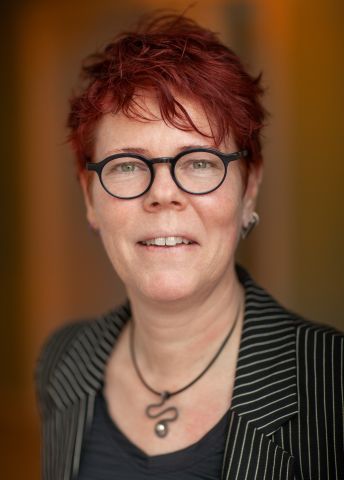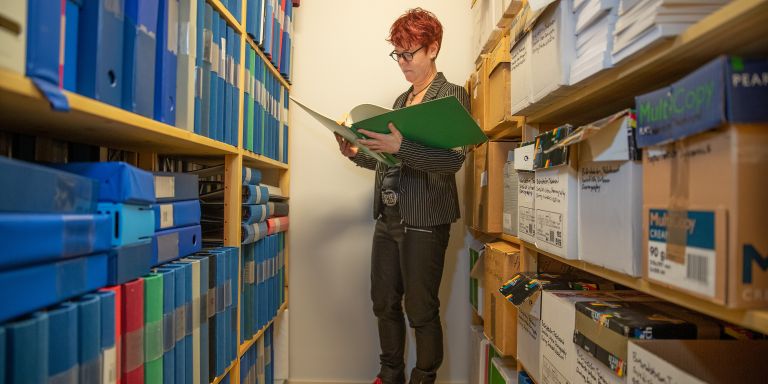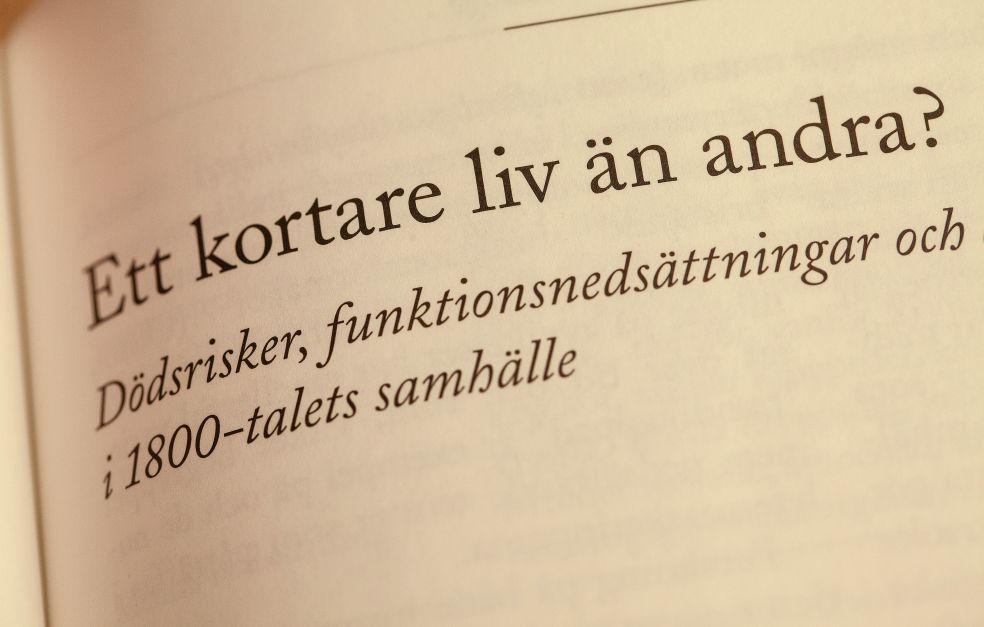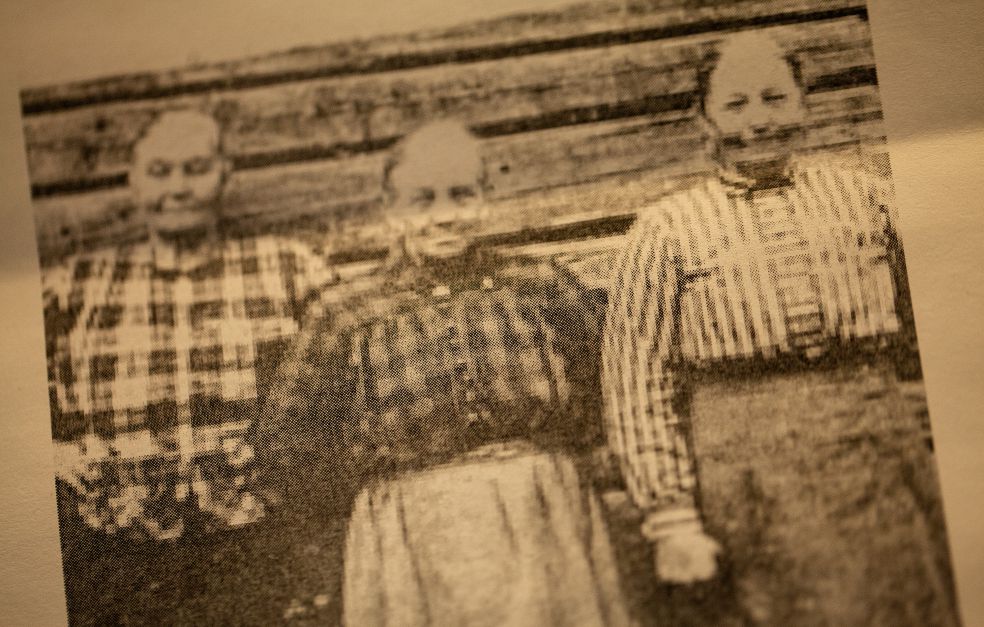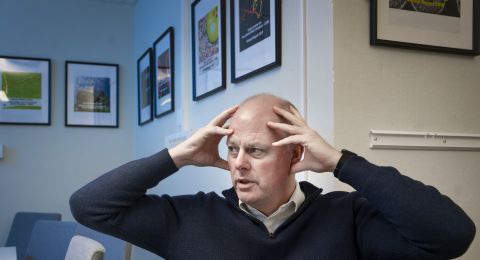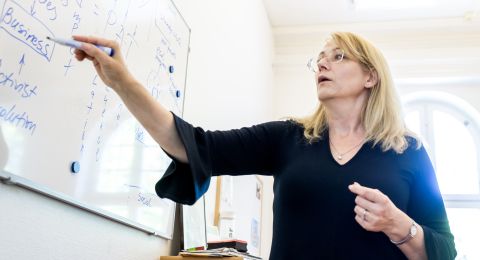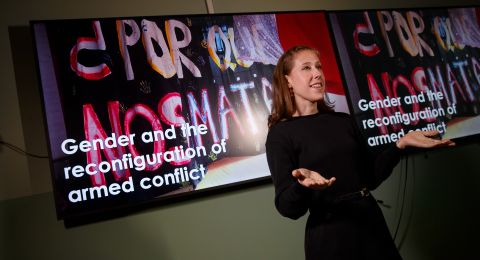About one and a half million people in Sweden live with some form of impairment. In the EU estimates vary between 65 and 80 million people. Yet we know relatively little about how different impairments impact people’s lives.
Since 2016 Vikström has been leading an interdisciplinary project, funded by the European Research Council, to examine the consequences of disabilities for the individual from 19th century Sweden until the present day.
Being chosen as a Wallenberg Scholar will enable her to delve even deeper into the topic. Among other things, she intends to study whether certain groups are more vulnerable due to factors such as gender and family situation.
“We are identifying risk factors already present when people are of working age, and the implications they have for health later on in life.”
The project is still in its early stages. At the end of the year Vikström and a colleague with a PhD in social work will be joined by an epidemiologist and statistician, along with a media and film researcher. They will be making quantitative comparisons over time and geography, and conducting qualitative interviews in which people describe their own lives. They will also be studying how disabilities are portrayed in popular culture.
“The long-term funding provided by the grant is something I have seldom experienced. It allows me to continue to lead my research team to acquire new knowledge about the largest minority group in the world, whose living conditions remain unknown.”
It is very quiet in the corridor outside her office at the Centre for Demographic and Ageing Research (CEDAR) at Umeå University. Almost all Vikström’s colleagues are working from home during the corona crisis.
It is too early to say whether the pandemic will impact her research. She suspects that people with disabilities will be more isolated than others during quarantine. For those who survive Covid-19, quality of life may also suffer due to impaired function of the lungs or other organs.
“The structure of society creates opportunities or hurdles. It’s up to us to decide whether everyone should be offered the same life opportunities,” Vikström says.
Finding the right path
Vikström grew up in Kisa, graduated from high school in Linköping, and moved to Umeå in the north of the country to continue her studies. She originally planned to train as an environment and public health inspector, but then opted for cultural studies. In the end she chose history, specializing in teacher training.
“All the other students on the final course were male. They talked about enrolling on the PhD program. I thought ‘if they can, then so can I’, and asked the professor how to go about it.”
She had written a master thesis on women who emigrated from Sweden to North America in the late 1800s – who they were and what happened to them. Her professor thought that the subject could be elaborated to form the basis for a doctoral thesis on gender differences in socio-geographic mobility in Sundsvall during the same period.
“Nowadays the application procedure is more organized, but back then it was more of a lottery. I was lucky to be among those chosen, and to receive a doctoral position.”
Valuable parish records
Vikström found a wealth of information in old church records. The Churches Act, passed in 1686, obliged priests to interview parishioners in their homes to ascertain their literacy and knowledge of Christianity. The results were recorded, together with their place of residence, occupation, and details of marriage, children, and death. Priests also noted down whether someone was feeble-minded or lame, as it was expressed at the time.
Vikström has benefited greatly from digitization of the Demographic Data Base, which enables researchers to make statistical analyses of people’s lives and living conditions.
“Impairments or diseases were not defined on medical grounds alone. They were also socio-culturally created in relation to what was perceived as normal, healthy or functional. Looking different or behaving differently constituted a health risk.”
Industrialization offered new opportunities, but also difficult challenges. It became harder for men with functional impairments to find work. Women with the same conditions seem to have managed better. They could be taken on as a maid or marry and be provided for.
Vikström mentions the example of Ingrid Kajsa, born in 1820, daughter to a farmer in the parish of Njurunda. When the girl was 12 the priest entered in the record of the home interview that she was deaf. Yet she was later employed as a maid, married a smallholder, had three children, and died at the age of 57.
“Her life path didn’t differ much from the lives of other farmer’s daughters,” Vikström points out.
According to the church records, Jonas, born the son of a smallholder in Sundsvall in 1812, was a “cripple”, i.e. physically impaired. There are no entries on his occupation. When he died, at the age of 33, he was living alone, childless.
“If Ingrid Kajsa had lived today, she might have been given a cochlear implant, and have had more jobs to choose between. Jonas could have worked using a computer, and found a partner online,” Vikström comments.
People with disabilities still find it difficult to find a partner. In a very recent study, Vikström shows that they have 60 percent less chance of experiencing partnership than do other adults. The study is based on demographic data from the 1800s up to the present day.
“Regardless of timeframe and welfare system, a disability severely reduces the likelihood of a romantic relationship. It’s hardest for people with cognitive impairment.”
Impacts many people
Vikström thinks her mother’s rheumatism and impaired mobility may have played a part in her choice of research field.
“The whole family is affected if one of its number is not healthy. Impairments are capricious, and can affect anyone, perhaps as the result of an accident.”
The social isolation potentially resulting from an impairment can shorten lives.
“It costs society more than it does to offer effective support at an early stage.”
Text Carin Mannberg-Zackari
Translation Maxwell Arding
Photo Magnus Bergström
